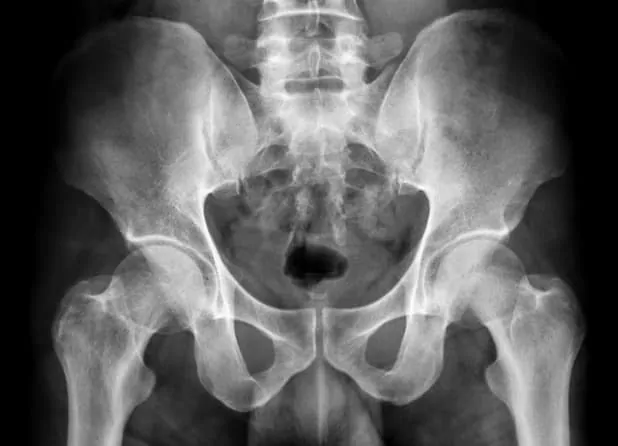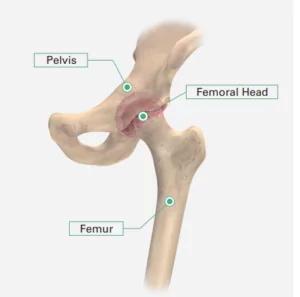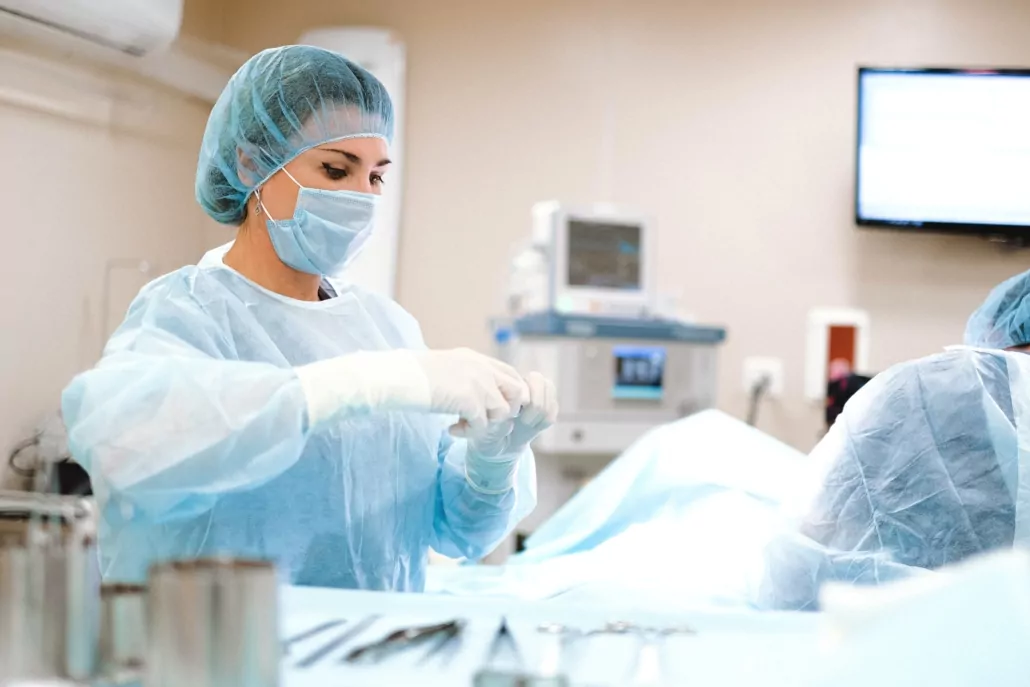TOTAL HIP REPLACEMENT
TOTAL HIP REPLACEMENT
The hip is a simple ball-and-socket joint where the thigh bone joins with the pelvis. The hip is the largest weight-bearing joint1 in the human body and is supported by muscles, cartilage, and ligaments. These structures surrounding the hip help to cushion the joint and allow it to work smoothly without pain.
A hip may become diseased with arthritis or injured during a fall, which may reduce mobility and may cause pain during movement or even at rest. When arthritis wears away the cartilage, the hip bones may start rubbing together, which can be painful and may cause damage to the surface of the bones.The damaged bone and cartilage may cause joint pain and limit range of motion.
If you or a loved one is experiencing hip pain and limited mobility, ask your physician whether a total hip replacement surgery is an appropriate treatment to get you or your loved one moving and back to living life.
How Does Your Hip Work?
The hip is a ball-and-socket joint where the ball is the upper end of the thigh bone (femur). The ball is called the femoral head. The socket is a hollow part of the pelvis and is called the acetabulum. The ball is controlled by muscles and stabilized by tendons that connect the muscle to the bone and ligaments that connect bones to bones. These structures that surround the hip joint allow for hip movement and rotation.
When the hip becomes diseased or injured, its natural balance and function may be disrupted, which potentially causes pain, limits mobility, or creates other medical challenges.
WHAT IS A TOTAL HIP REPLACEMENT SURGERY ?
The hip is a ball-and-socket joint where the ball is the upper end of the thigh bone (femur). The ball is called the femoral head. The socket is a hollow part of the pelvis and is called the acetabulum. The ball is controlled by muscles and stabilized by tendons that connect the muscle to the bone and ligaments that connect bones to bones. These structures that surround the hip joint allow for hip movement and rotation.
When the hip becomes diseased or injured, its natural balance and function may be disrupted, which potentially causes pain, limits mobility, or creates other medical challenges.
HOW IS A TOTAL HIP REPLACEMENT SURGERY PERFORMED ?
A hip replacement surgery may be performed either through a traditional approach or a minimally-invasive one. The main difference between the two approaches is that in a minimally-invasive approach the surgeon makes a smaller incision in order to disrupt less of the muscle and local structures to replace the hip2 .
This approach may lead to a smaller scar, less pain, a shorter hospital stay, and a faster return to life activities2. Ask your doctor which approach is best for your medical situation.
Physical therapy may begin the same day as your surgery starting with sitting on the edge of your bed, and then moving towards walking down the hall. Physical therapy may continue for up to three months after surgery3 .
Depending on your recovery and your surgeon’s recommendations, some patients are able to resume everyday activities like walking, climbing stairs and driving within six weeks after surgery3 . Low impact sports and activities, such as golf, dancing and gardening may be resumed within twelve weeks after surgery3 , but only after your doctor approves the activity. Recovery time will vary for each patient.
Following your doctor’s recommendations and physical therapy schedule will help to ensure a successful recovery following a total hip replacement surgery.
1. Arthritis Foundation, Anatomy of the Hip: An Inside Look at the Structure of the Hip,https://www.arthritis.org/about-arthritis/where-it-hurts/hip-pain/hip-anatomy.php
2. WebMD, Arthritis and Hip Replacement Surgery, https://www.webmd.com/arthritis/hip-replacement-surgery#1
3. WebMD, Timeline: Hip Replacement Surgery, https://www.webmd.com/osteoarthritis/timeline-hip-replacement#1
4. Cleveland Clinic, Joint Replacement: 5 Benefits of Outpatient Surgery, https://health.clevelandclinic.org/joint-replacement-5-benefits-of-outpatient-surgery/





